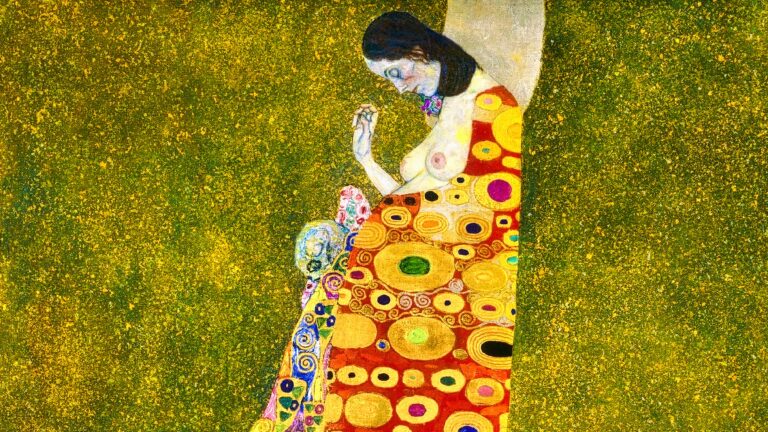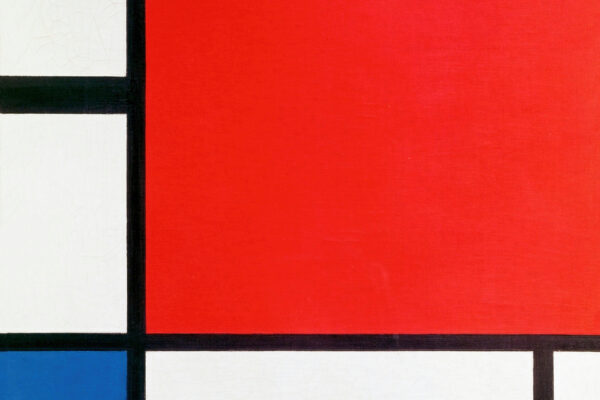
Gustav Klimt, the renowned Austrian symbolist artist, created a remarkable masterpiece titled “Hope II” (Die Hoffnung II) in 1907–08. This oil-on-canvas painting, adorned with gold and platinum, captures the essence of life, death, and the indomitable human spirit. In this blog post, we explore the profound symbolism hidden within “Hope II,” shedding light on Klimt’s artistic techniques and the deeper meanings behind the pregnant woman, the presence of death, and the mourning figures.
Klimt’s “Hope II” focuses on a pregnant woman, believed to be Herma, one of the artist’s favorite models. This captivating figure serves as the embodiment of hope and the cycles of life. In contrast to Klimt’s earlier work, “Hope I,” where the pregnant woman was depicted naked, in “Hope II,” she is dressed in a long cloak embellished with geometric shapes. The dress, reminiscent of Byzantine artwork, adorned with gold leaf, represents the beauty and divine nature of creation.
The pregnant woman, with closed eyes and bowing her head, symbolizes introspection and inner strength. Her long brown hair cascades around her face, emphasizing her femininity and connection to the natural world. However, behind her burgeoning abdomen, a human skull emerges, representing the inevitability of death and the fragility of existence. It serves as a reminder of the dangers and challenges of childbirth, or possibly a memento mori, encouraging reflection on the transitory nature of life.
At the foot of the painting, three women lower their heads, portraying an aura of prayer or mourning. Their presence adds depth to the artwork, evoking themes of empathy, collective grief, and the universal experience of loss. Their bowed heads suggest resilience and the capacity to find solace and strength through shared sorrow.
The artistic composition of “Hope II” is equally significant. The square-shaped painting measures 110.5 by 110.5 centimeters, with the pregnant woman and mourning figures occupying the central third. The contrasting elements within the artwork are striking: the woman’s richly colored and patterned dress, reminiscent of Byzantine and Orthodox iconography, stands out against the delicately painted human faces and bare flesh. The dark, gold-flecked background on either side adds depth and contrast to the overall composition.
Gustav Klimt’s “Hope II” is a testament to the artist’s ability to infuse profound symbolism into his creations. Through the pregnant woman, adorned dress, presence of death, and mourning figures, Klimt explores the cycles of life, the fragility




